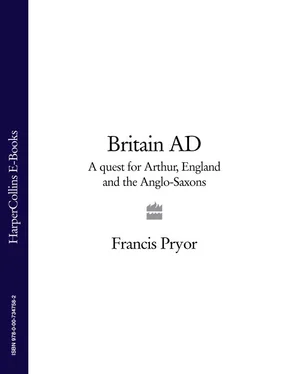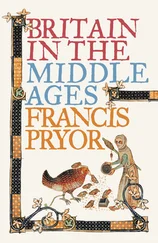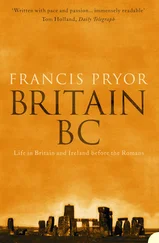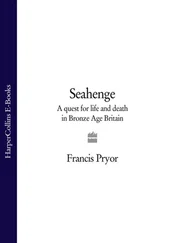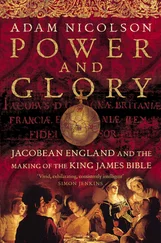Today most people with even a passing interest in the past are broadly familiar with what one might call the cultural aspects of medieval times. We enjoy their great buildings, their paintings, sculpture and increasingly their music. As a result, we believe we can identify with them. The post-Roman period lurks on the misty, romantic fringes of that world. It’s a period that we wish we could identify with, but sadly we cannot. This is frustrating, because for better or worse the Dark Ages lie at the threshold of the period that gave rise to our own times. As a consequence of this, over the centuries we have recast the Age of Arthur in our own image. This is because historians, story-tellers and others are very good at reshaping the past in ways which reflect contemporary concerns. Today, for example, some of us look to Arthur to supply the mysticism which seems to have vanished from modern life, for whatever reason: perhaps the rationality of science, growing secularism, or even the dogmatic certainties of evangelical religion. These surely are some of the reasons why the Arthur industry is thriving. I have no wish to debunk the hundreds of books, films and videos that appear every year on Arthur and his court. Rather my intention is to think about the contexts of that time and to consider what might actually have happened, given what we know about previous and subsequent epochs from both archaeology and history.
I have already mentioned that the Romans introduced writing to Britain. Of course most people were not aware of it at the time, but this process had already given rise to the discipline of history, which one might define as the study of the past from written sources. These sources can be as diverse as wills, letters, accounts, inscriptions, military commands or ecclesiastical texts, but they are all grist to the historian’s mill. The historian’s tradition is to paint with a broad brush and to seek causes for historical events. Historians also have a tradition of superb writing: open Edward Gibbon’s magisterial The Decline and Fall of the Roman Empire (written between 1776 and 1788) at random, and some resounding passage will tumble forth. This is what Gibbon says about King Arthur. I quote it at length both because it makes excellent sense and because it reads so beautifully:
But every British name is effaced by the illustrious name of ARTHUR, *the hereditary prince of the Silures, in south Wales, and the elective king or general of the nation. According to the most rational account he defeated, in twelve successive battles, the Angles of the North and the Saxons of the West; but the declining age of the hero was embittered by popular ingratitude and domestic misfortunes. The events of his life are less interesting than the singular revolutions of his fame. During a period of five hundred years the tradition of his exploits was preserved, and rudely embellished, by the obscure bards of Wales and Armorica [Brittany], who were odious to the Saxons, and unknown to the rest of mankind. The pride and curiosity of the Norman conquerors prompted them to inquire into the ancient history of Britain; they listened with fond credulity to the tale of Arthur, and eagerly applauded the merit of a prince who had triumphed over the Saxons, their common enemies. His romance, transcribed in the Latin of Jeffrey of Monmouth, and afterwards translated into the fashionable idiom of the times, was enriched with the various, though incoherent, ornaments which were familiar to the experience, the learning, or the fancy of the twelfth century…At length the light of science and reason was rekindled; the talisman was broken; the visionary fabric melted into air; and by a natural, though unjust, reverse of the public opinion, the severity of the present age is inclined to question the existence of Arthur. 5
That was going too far, even for Gibbon, who clearly believed in Arthur as a real historical figure.
At first archaeologists followed this grand tradition, but it soon became apparent that the writing of sweeping narrative did not work for archaeology. It’s not that our data do not allow us to draw general conclusions; it’s just that we should not attempt to mimic what historians do so well. As archaeologists we can indeed paint with a broad brush, but we have learnt that it is best to confine our efforts to the painting of archaeological pictures. Today archaeology tends to be more concerned with the long-term processes of social change. We prefer to work with landscapes rather than lineages, and we tend to be less involved with one-off events than with more gradual change. When we do try to pin down specific historical incidents we often become unstuck. The classic case, which I will discuss in Chapter 6, is that of the so-called Anglo-Saxon ‘conquest’ of England, and its aftermath.
Because archaeologists work with data that are foreign to most historians, we are sometimes accused of stretching the evidence too far. I was once kindly, but rather patronisingly, told by a classicist that I, and archaeologists like me, should take lessons on the limitations of inference. 6He did not believe that prehistoric data (i.e. sherds of pottery, fragments of flint, or pieces of bone) were capable of sustaining speculation about the manner in which prehistoric communities might have viewed the world around them. Most prehistorians consider we are ‘speculating’ from the safety of solid statistical or palaeoenvironmental data. We do not believe that we are flying kites. Having said that, we do not believe either that we have actually hit on the truth, because unless a day dawns when we can somehow get inside the minds of long-dead people, we will never know how or what they actually thought. Even then we will have to confront the many prob lems that face anthropologists when they try to explain what motivates tribal societies in various parts of the world today. In fact the long established, innate conservatism of the archaeological profession makes it extremely hazardous for any prehistorian to espouse ‘flaky’ theories, or ideas that tend, however slightly, towards the crackpot. Recently, however, there has been a welcome freeing-up of attitudes. In the past two decades the intellectual climate in archaeology has become more liberal, and slightly less intolerant of dissent from within. Ironically, only history—in perhaps a century or two—will be able to judge the extent to which archaeology is actually revealing truths or is building castles in the air.
There is one important difference between history and archaeology which has nothing to do with the quality of the data we study, but rather its quantity. Written historical information on the post-Roman era in Britain is surprisingly scarce, and new discoveries happen very rarely; when they do, it is often in the course of archaeological excavation. By contrast with the essentially static historical ‘database’, that of archaeology is constantly increasing. Hardly a day goes by without some new discovery. Often these discoveries might appear routine and unimportant, such as the exposure of the footings of yet another Saxon-period house, but these isolated pieces of information can be fitted together to form a coherent pattern. It’s a process that can take years, as we will see (Chapter 8) in the case of Dominic Powlesland’s work at West Heslerton in Yorkshire, but that does not make it any less reliable. The progress of archaeological research tends to be gradual and cumulative; it can only be measured from time to time. That is why it is sometimes necessary to step back in both time and space to take a broader view.
When I started writing this book, I intended to organise it much as we had done the three television films, for the simple reason that it seemed to work very well. I also liked the process that gave rise to the structure of the films. In many ways the making of the television series was like an archaeological project, being based on a small and closely integrated team. As the months passed its structure grew in complexity: stories nested within stories in a way that is only possible on film, where one can show one thing on screen, while telling another in commentary and flashback. I decided to arrange the book in a simpler fashion, that was only broadly based on the structure of the films. I start with two chapters on the ancient sources and modern origin myths of Britain, and the legends that surround King Arthur. In subsequent chapters I turn to the archaeological evidence, starting not in the Dark Ages of immediately post-Roman Britain, not even in the preceding Roman period, but in pre-Roman, or prehistoric, times, where the roots of the mythical King undoubtedly lie. 7
Читать дальше
